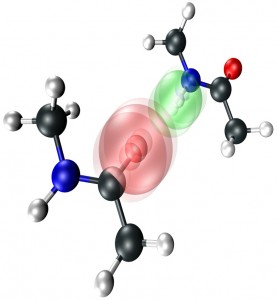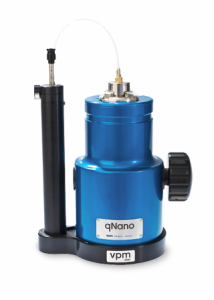The Seventh Canadian Science Policy Conference, being held in Ottawa, Ontario from Nov. 25 – 27, 2015 at the Delta Ottawa City Centre Hotel, has announced its programme and speakers in a July 16, 2015 Canadian Science Policy Centre newsletter,
Presentations
Theme 1: Transformative and Converging Technologies on
Private Sector Innovation and ProductivityNew technologies, from 3D printing to quantum computing, present risks and opportunities for Canadian industries and the economy. Join CSPC 2015 in a discussion of how Canada’s mining industry and digital economy can best take advantage of these technological innovations.
Challenges Associated with Transferring New Technologies to the Mining Industry,
Centre for Excellence in Mining InnovationCreating Digital Opportunity for Canada: challenges and emerging trends,
Munk School of Global AffairsDisruptive Technologies,
Ryerson UniversityTheme 2: Big Science in Canada – Realizing the Benefits
ENCode, the LHC, the Very Large Array: Big Science is reshaping modern research and with it, Canada’s scientific landscape. Join the conversation at CSPC 2015 on how Canada navigates those vast new waters.
Science Without Boundaries,
TRIUMFTheme 3: Transformation of Science, Society and Research
in the Digital Age: Open science, participation, security and
confidentialityThe digital age has brought important changes to the Canadian scientific landscape. Come discuss and think about the effects of those changes on our society.
The Role of Innovation in Addressing Antimicrobial Resistance,
Industry CanadaDigital Literacy: What is going to make the real difference?,
ActuaScience Blogging: The Next Generation,
Science BorealisProposals for Advancing Canadian Open Science Policy,
Environment CanadaTheme 4: Science and Innovation for Development
Innovation and sciences are among the key driver of development. Come and find out how Canadian creativity creates unique opportunities.
Role of Open Science in Innovation for Development,
International Development Research Centre (IDRC)Learning Creativity in STEM Education,
University of CalgaryTheme 5: Evidence-Based Decision Making: The challenge
of connecting science and policy makingGMOs, climate change, energy: Many of the big major issues facing Canada fall at the nexus of science and policymaking. Join CSPC 2015 in a discussion of the role of big data and evidence-based decision-making in government.
Beating Superbugs: Innovative Genomics and Policies to Tackle AMR,
Genome CanadaAddressing Concerns Over GMOs – Striking the Right Balance,
Agriculture and Agri-food CanadaWho Should be the Voice for Science Within Government?,
Evidence for DemocracyData Driven Decisions: Putting IoT, Big Data and Analytics to Work For Better Public Policy,
CyberaThe future of university support for Canada’s Science, Technology & Innovation Strategy,
York UniversityPlease note, there will be more panels announced soon.
Keynote Session
Science Advice to Governments
Innovation, science and technologies never had a more critical role in decision making than today. CSPC 2015 keynote session will address the importance and role of the input from the scientific world to decision making in political affairs.Speakers:
Sir Peter Gluckman,
Chief Science Adviser to New Zealand GovernmentRémi Quirion,
Chief Scientist, QuebecArthur Carty,
Executive Director, Inst. Nanotechnology U Waterloo, Former science adviser to PM Paul Martin [emphasis mine]
I have a few comments. First, I’m glad to see the balance between the “money, money, money” attitude and more scholarly/policy interests has been evened out somewhat as compared to last year’s conference in Halifax (Nova Scotia). Second, I see there aren’t any politicians listed as speakers in the website’s banner as is the usual case (Ted Hsu, Member of Parliament and current science critic for the Liberal Party, is on the speaker list but will not be running in the 2015 election). This makes some sense since there is a federal election coming up in October 2015 and changes are likely. Especially, since it seems to be a three-horse race at this point. (For anyone unfamiliar with the term, it means that any one of the three main political parties could win and lead should they possess a majority of the votes in the House of Commons. There are other possibilities such as a minority government led by one party (the Harper Conservatives have been in that situation). Or, should two parties, with enough combined votes to outnumber the third party, be able to agree, there could be a coalition government of some kind.) As for other politicians at the provincial and municipal levels, perhaps it’s too early to commit? Third, Arthur Carty, as he notes, was a science advisor to Prime Minister Paul Martin. Martin was the leader of the country for approximately two years from Dec. 2003 – Nov. 2005 when a motion of non confidence was passed in Parliament (more about Paul Martin and his political career in his Wikipedia entry) an election was called for January 2006 when Stephen Harper and the conservatives were voted in to form a minority government. Arthur Carty’s tenure as Canada’s first science advisor began in 2004 and ended in 2008, according to Carty’s Wikipedia entry. It seems Carty is not claiming to have been Stephen Harper’s science advisor although arguably he was the Harper government’s science advisor for the same amount of time. This excerpt from a March 6, 2008 Canada.com news item seems to shed some light on why the Harper sojourn is not mentioned in Cary’s conference biography,
The need for a national science adviser has never been greater and the government is risking damage to Canada’s international reputation as a science leader by cutting the position, according to the man who holds the job until the end of the month.
Appearing before a Commons committee on Thursday, Arthur Carty told MPs that he is “dismayed and disappointed” that the Conservative government decided last fall to discontinue the office of the national science adviser.
“There are, I think, negative consequences of eliminating the position,” said Carty. He said his international counterparts have expressed support for him and that Canada eliminating the position has the “potential to tarnish our image,” as a world leader in science and innovation.
Carty was head of the National Research Council in 2004 when former prime minister Paul Martin asked him to be his science adviser.
In October 2006, [months] after Prime Minister Stephen Harper was elected, Carty’s office was shifted to Industry Canada. After that move, he and his staff were “increasingly marginalized,” Carty told the industry, science and technology committee, and they had little input in crafting the government’s new science and technology strategy.
…
But Conservative members of the committee questioned whether taxpayers got their money’s worth from the national adviser and asked Carty to explain travel and meal expenses he had claimed during his time in the public service, including lunch and dinner meetings that cost around $1,000 each. Some of the figures they cited were from when Carty was head of the National Research Council.
The suggestions that Carty took advantage of the public purse prompted Liberal MP Scott Brison to accuse the Tories of launching a “smear campaign” against Carty, whom he described as a “great public servant.”
“I have never overcharged the government for anything,” Carty said in his own defence.
…
The keynote has the potential for some liveliness based on Carty’s history as a science advisor but one never knows. It would have been nice if the organizers had been able to include someone from South Korea, Japan, India, China, etc. to be a keynote speaker on the topic of science advice. After all, those countries have all invested heavily in science and made some significant social and economic progress based on those investments. If you’re going to talk about the global science enterprise perhaps you could attract a few new people (and let’s not forget Latin America, Africa, and the Middle East) to the table, so to speak.
You can find out more about the conference and register (there’s a 30% supersaver discount at the moment) here.

